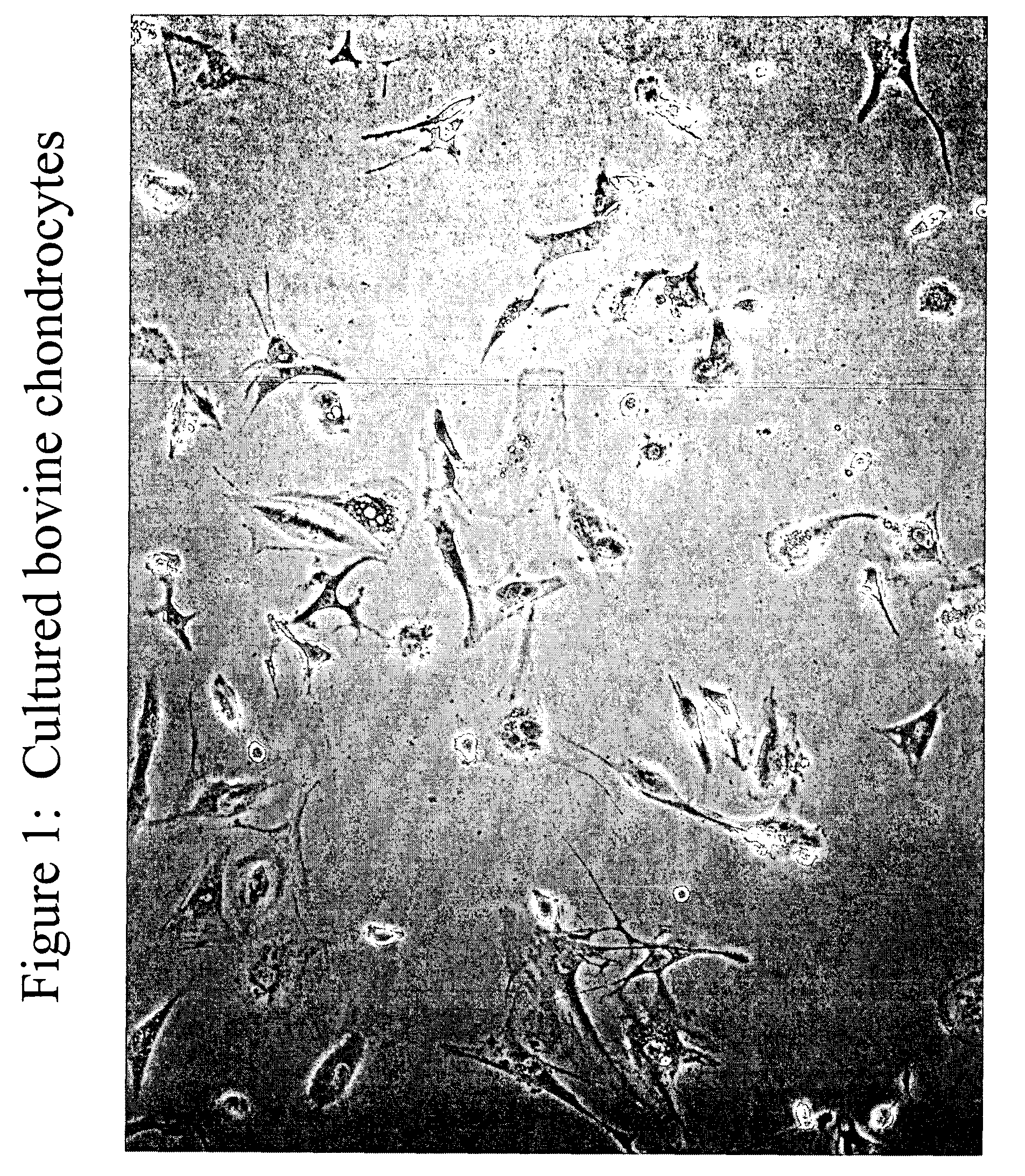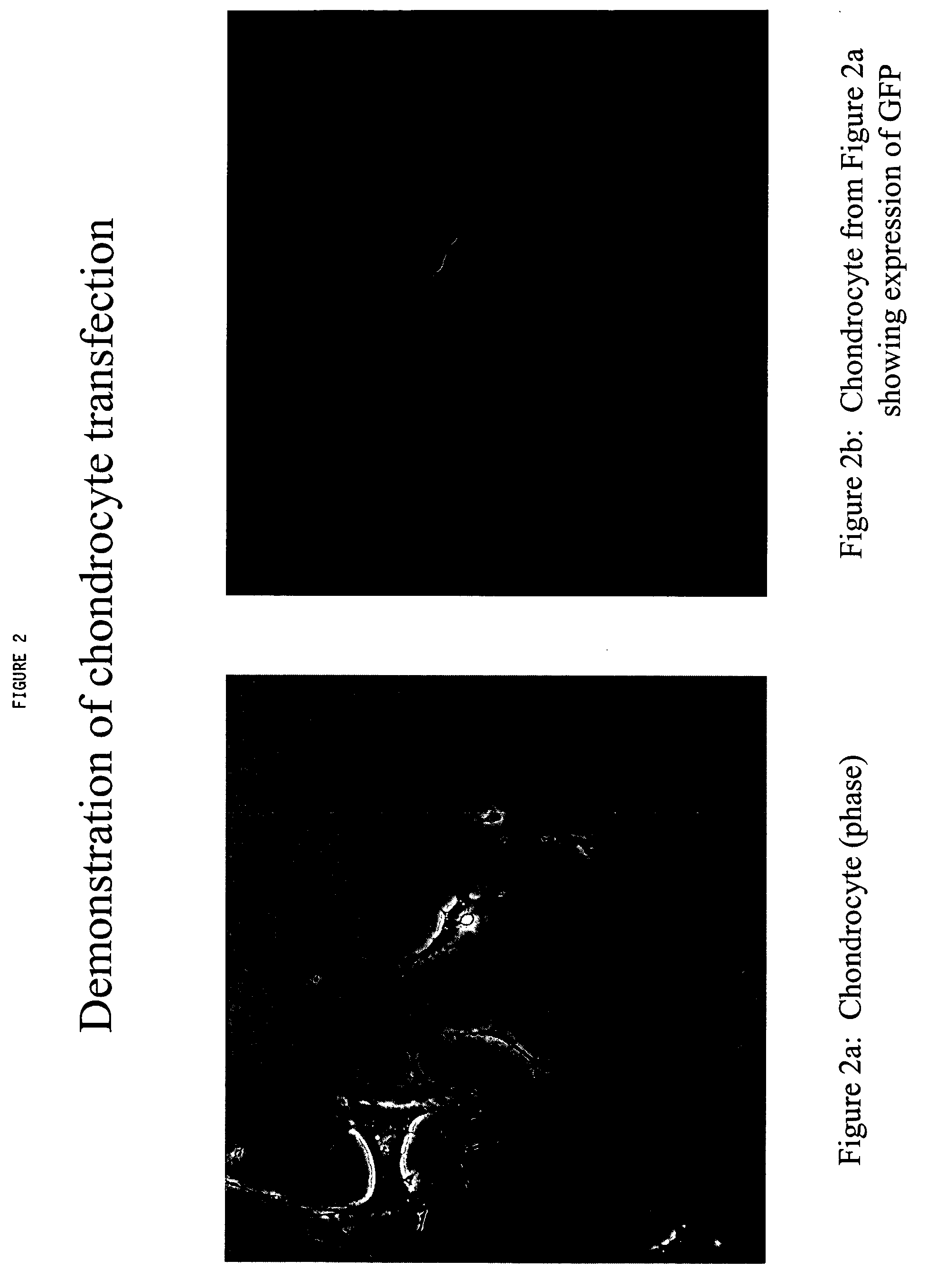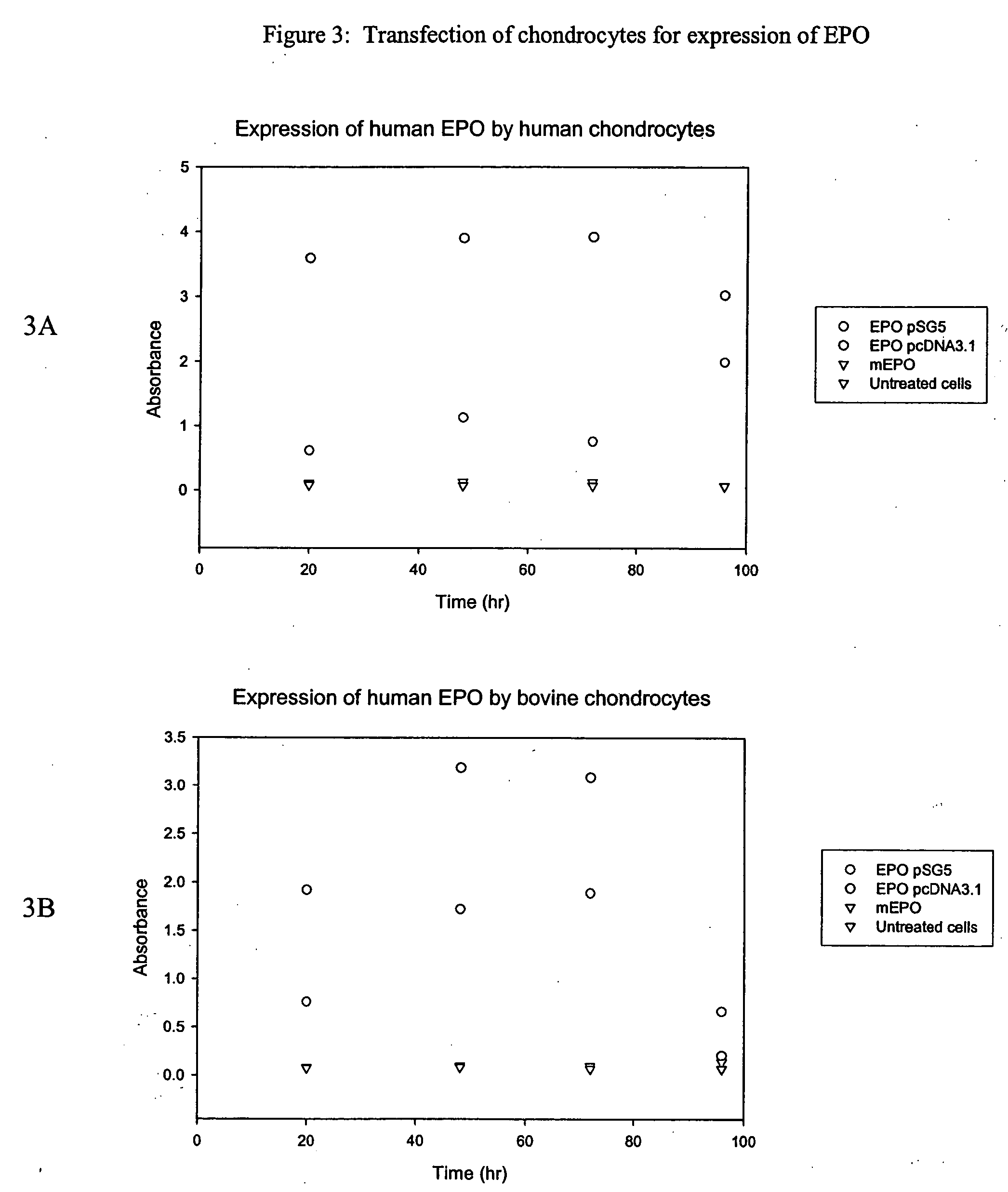Chondrocyte therapeutic delivery system
a chondrocyte and delivery system technology, applied in the field of chondrocyte therapeutic delivery system, can solve the problem of no teaching in the art that chondrocytes can be used to express therapeutic effects, and achieve the effect of convenient optimization
- Summary
- Abstract
- Description
- Claims
- Application Information
AI Technical Summary
Benefits of technology
Problems solved by technology
Method used
Image
Examples
example 1
In vitro Isolation and Culturing of Chondrocyte Cells
[0119] This example describes one of many possible methods of isolating and culturing chondrocyte cells. Articular cartilage was aseptically obtained from calf knee joints. Cartilage was shaved from the end of the bones using a scalpel. The tissue was finely minced in saline solution and submitted to collagenase and trypsin digestion for several hours at 37° C. until the tissue was completely digested and single cells were generated. The chondrocyte cells isolated from the cartilage tissue were then washed from enzyme and seeded onto tissue culture plastic dishes at a concentration of about 10,000 cells / cm2. The chondrocyte cells where expanded in 10% FBS containing DMEM culture medium Following expansion, the chondrocytes can be released from the vessel using a trypsin / EDTA treatment, centrifuged and concentrated or diluted to a desired concentration to achieve for example a seeding density of approximately 5,000 cells to about ...
example 2
In vitro Transfection of Chondrocyte Cells and Expression of a Marker Protein
[0120] This example described the techniques used to transfect chondrocytes with a marker protein, Green fluorescent protein (GFP). A DNA vector carrying a reporter gene is used to establish proof of concept for the utility of normal articular chondrocytes as a drug delivery system for therapeutic application in ectopic sites. As a model, a DNA vector (pTracer-SV40) carrying a gene for green fluorescent protein was used as a surrogate to model a protein not normally present in chondrocytes, and of therapeutic value. If chondrocytes can be transfected by the model vector and expressed the foreign protein, it would demonstrated the ability of using this system for therapeutic protein. In the following example, a lipid formulation from Stratagene (GeneJammer) was used to introduced the foreign DNA into chondrocytes. Any other reagent or physical means of introducing DNA into cell would serve the same purpose....
example 3
In vitro Transfection of Human and Bovine Chondrocyte Cells and Expression of EPO Protein
[0124] This example describes the techniques used to transfect chondrocytes with a therapeutic agent, human erythropoietin (EPO).
[0125] An EPO vector was generated which comprised the EPO gene (Genbank Accession No. 182198) inserted into the commercially available pSG5 backbone (Stratagene Inc.). The pSG5 plasmid contains ampicillin and kanamycin as a selection marker for bacteria. This construct also contains F1 filamentous phage origin and SV40 promoter for better expression. The 584 base pair EPO fragment was cloned into the NCO / Bam H1site site of pSG5. The size of this vector was about 4.6 kb.
[0126] A second EPO vector was generated which comprised the EPO gene inserted into the commercially available pcDNA3.1 backbone (Invitrogen Life Technologies). This particular construct has the antibiotic Neomycin as a selection marker for mammalian cells.
[0127] Each of the EPO vectors was transfec...
PUM
| Property | Measurement | Unit |
|---|---|---|
| volume | aaaaa | aaaaa |
| volume | aaaaa | aaaaa |
| volume | aaaaa | aaaaa |
Abstract
Description
Claims
Application Information
 Login to View More
Login to View More - R&D
- Intellectual Property
- Life Sciences
- Materials
- Tech Scout
- Unparalleled Data Quality
- Higher Quality Content
- 60% Fewer Hallucinations
Browse by: Latest US Patents, China's latest patents, Technical Efficacy Thesaurus, Application Domain, Technology Topic, Popular Technical Reports.
© 2025 PatSnap. All rights reserved.Legal|Privacy policy|Modern Slavery Act Transparency Statement|Sitemap|About US| Contact US: help@patsnap.com



